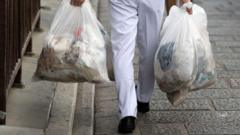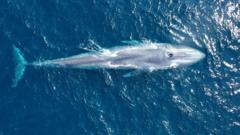Grassroots initiatives emerge as residents utilize scientific tools for greater transparency on radiation levels, challenging official narratives.
Citizen Scientists Take Charge in Fukushima's Recovery Efforts

Citizen Scientists Take Charge in Fukushima's Recovery Efforts
In the wake of the 2011 nuclear disaster, community members in Japan's Fukushima region are monitoring radiation to reclaim their environment and lives.
Every winter, as the snow begins to melt in northern Japan, Tomoko Kobayashi and her group of fellow citizen scientists embark on a mission to measure the lingering radiation in their local environment, particularly around the village of Tsushima. Since the Fukushima Daiichi nuclear disaster in March 2011, which was precipitated by a powerful tsunami, sections of the landscape have been left contaminated by radioactive particles. Every trip necessitates careful planning as they armor themselves with measuring devices resembling Geiger counters to capture data on gamma rays emitted in the air.
Kobayashi, who runs an inn in Odaka—a town situated ten miles north of the disaster site—has taken it upon herself to safeguard her community. Their direct engagement contrasts sharply with the official government's assertion that the crisis has concluded; instead, they aim to provide tangible data to indicate ongoing risks. During their measurements, they fan out across the landscape, cataloging their findings to assemble color-coded maps that visually depict areas of heightened radioactivity.
These community-generated maps serve as essential tools for local residents, allowing them to know which fruits are safe to harvest and which areas should be avoided. The tradition of gathering data has become vital for Kobayashi especially, given her familial ties to the inn that her family has operated for generations. With a firm belief in self-empowerment and self-awareness, she explains how the only method to ascertain safety relies upon well-informed measurements, stating, “The only way to know for sure is do the measuring ourselves.”
As these dedicated citizen scientists continue their meticulous work, they foster a palpable sense of resilience and hope, pushing against the narrative promoted by authorities while striving to create a safer and more transparent future for their community.
Kobayashi, who runs an inn in Odaka—a town situated ten miles north of the disaster site—has taken it upon herself to safeguard her community. Their direct engagement contrasts sharply with the official government's assertion that the crisis has concluded; instead, they aim to provide tangible data to indicate ongoing risks. During their measurements, they fan out across the landscape, cataloging their findings to assemble color-coded maps that visually depict areas of heightened radioactivity.
These community-generated maps serve as essential tools for local residents, allowing them to know which fruits are safe to harvest and which areas should be avoided. The tradition of gathering data has become vital for Kobayashi especially, given her familial ties to the inn that her family has operated for generations. With a firm belief in self-empowerment and self-awareness, she explains how the only method to ascertain safety relies upon well-informed measurements, stating, “The only way to know for sure is do the measuring ourselves.”
As these dedicated citizen scientists continue their meticulous work, they foster a palpable sense of resilience and hope, pushing against the narrative promoted by authorities while striving to create a safer and more transparent future for their community.






